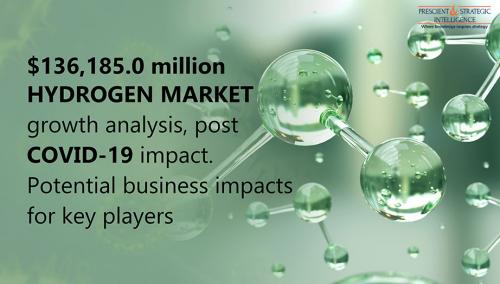Sulfur Removing Property of Hydrogen Increasing its Usage in Oil Refineries

Hydrogen is utilized in the refining industry for eliminating sulfur compounds from crude oil and breaking long-chain hydrocarbons into shorter chains, during the production of gasoline. The heavier and sour crude oil needs extensive processing, and the surging production of this oil will accelerate the consumption of hydrogen. Additionally, stringent environmental norms directed at curtailing sulfur content in oil have resulted in heavy consumption of hydrogen by refinery companies. For example, on January 1, 2020, the International Maritime Organization (IMO) imposed a new global cap of 0.5% on the sulfur content in fuel.
Download report sample at: https://www.psmarketresearch.com/market-analysis/hydrogen-market/report-sample
Also, the increasing requirement for nitrogen-based fertilizers will assist the hydrogen market to grow from $136,185.0 million in 2019 to $196,934.5 million by 2030. The market is expected to advance at 4.3% CAGR during the forecast period (2020–2030). Nitrogen-based fertilizers or ammonia-based fertilizers require hydrogen and nitrogen for their production. These products are utilized in agricultural field to increase the productivity of farms and growth rate of crops. With the declining area of arable land, the demand for fertilizers will amplify in the coming years.
To meet the high requirement of hydrogen, the end-use industries like chemical, refinery, transport, metal processing, marine, and aviation are increasingly relying on the on-site generation of hydrogen. The on-site generation method is cost-effective, as compared to tanker and cylinder distribution methods, when the requirement is for long duration, generally up to 10–15 years. The method also involves a less-intricate way of hydrogen transportation, which is beneficial for end users. Moreover, it also aids end-use companies in maintaining smooth operations, by decreasing the risks related to the supply chain.
The production process segment of the hydrogen market is classified into coal gasification, steam-methane reforming, partial oxidation, electrolysis, and others such as fermentation, ammonia cracking, renewable liquid reforming, and methanol reforming. Among these, the steam–methane reforming category held the largest market share in 2019, due to the easy availability of feedstock, a well-maintained supply chain, and lower cost of this production method, in comparison to other methods of production.
Browse full report at: https://www.psmarketresearch.com/market-analysis/hydrogen-market
Furthermore, the APAC hydrogen market will exhibit the fastest growth during the forecast period. This can be ascribed to the growth of several end-use industries like electronics, chemical, and petrochemical in the region. Global players of these sectors are switching to APAC countries, due to the availability of low-cost raw materials and labors. Moreover, stringent environmental regulations in the Western countries are compelling manufacturers to shift their production base to the region. Additionally, the expansion of metal processing and refinery sectors in India and China will also drive the regional market growth.
Thus, the implementation of environmental laws regarding sulfur content in crude oil and the high-volume consumption of fertilizers will amplify the usage of hydrogen in the foreseeable future.
Advertise on APSense
This advertising space is available.
Post Your Ad Here
Post Your Ad Here
Comments